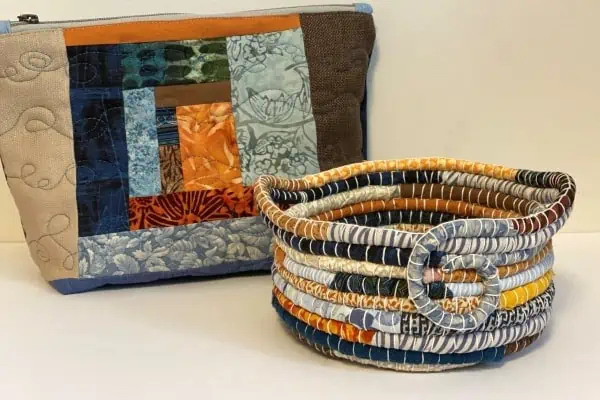A chance meeting a long time ago started a friendship and a quilting group that has been meeting now for three decades.
As it happened, Yukoners Dorothy Smith and Karen McIver enrolled in an embroidery class at the public library in the early 1980’s. Upon leaving they began to chat. The course was great, but what Dorothy and Karen really wanted to was quilt.
Dorothy had a pattern with her from Chatelaine magazine – Flowers of Canada. She loaned the pattern to a grateful Karen.The quilting group started soon after and is still meeting on Wednesdays so many years later.
Quilting, which is the stitching together of layers of padding and fabric, may date back to ancient Egypt. Quilting was likely introduced to Europe by Crusaders. The “Tristan quilt” made circa 1360 is the earliest work existing today.
While Karen McIver, an RCMP wife, eventually left the territory, Dorothy Smith, now 95 years old, is still here.
After all, Dorothy Smith is a northern woman. She was born in Atlin on March 9, 1920. Her birth mother passed away from flu shortly after giving birth. She was adopted as a newborn by the Matson family. Dorothy grew up along the creek in Atlin, living there until she was 22 years old.
While the family did have a house in Atlin, I believe Dorothy’s love of work and keeping busy would have been nurtured on the creek.
Her dad was a miner, and over the winter months he often cut and hauled wood – two cords a day, earning $4.50 for his work.
Dorothy’s adoptive mother came from Sweden at the age of 16. She settled in Seattle and began training in a bakery. She met her husband a few years later and they came to Atlin in 1916. The Matson property just recently sold in Atlin.
While Dorothy’s mother knew how to knit, embroider and crochet, she did not teach Dorothy these skills. Dorothy, as a young wife and mother, took an interest in hand work when she moved to Whitehorse with her husband Jim, and learned learned Hardanger embroidery from her sister in law She loved Hardanger and Brazilian embroidery in addition to quilting, and passed on this love of craft to daughter Marilyn. Dorothy’s son Eric has a few of his mom’s most treasured pieces of this beautiful craft.
I especially love Hardanger embroidery, which is thought to have its beginnings in Persia and Asia. During the Renaissance this early form of embroidery spread to Italy. By 1700, variations had spread to northern Europe. From 1650 to 1850 Hardangersom, meaning work from the Hardanger area, flourished in Norway.
Originally, flax was grown and woven into fabric. Cotton material is used today. Norwegian traditional costumes often highlight the stitchery.
Patience is a most important quality, as Hardanger involves counting threads on even weave cotton. If you make a mistake, Dorothy quips, it is virtually impossible to find and correct. Often work must be started again.
I recently enjoyed an afternoon visit with Dorothy.
“My eyes are still good,” she tells me. When not quilting, she is knitting socks. The self-striping sock yarn is so much fun to work up.
Dorothy still attends the quilting group. Her work is exquisite – with meticulous stitches and attention to detail. She recently donated a quilt to the Chemotherapy ward at Whitehorse General Hospital. We both agreed that the best things in life are made by hands.




